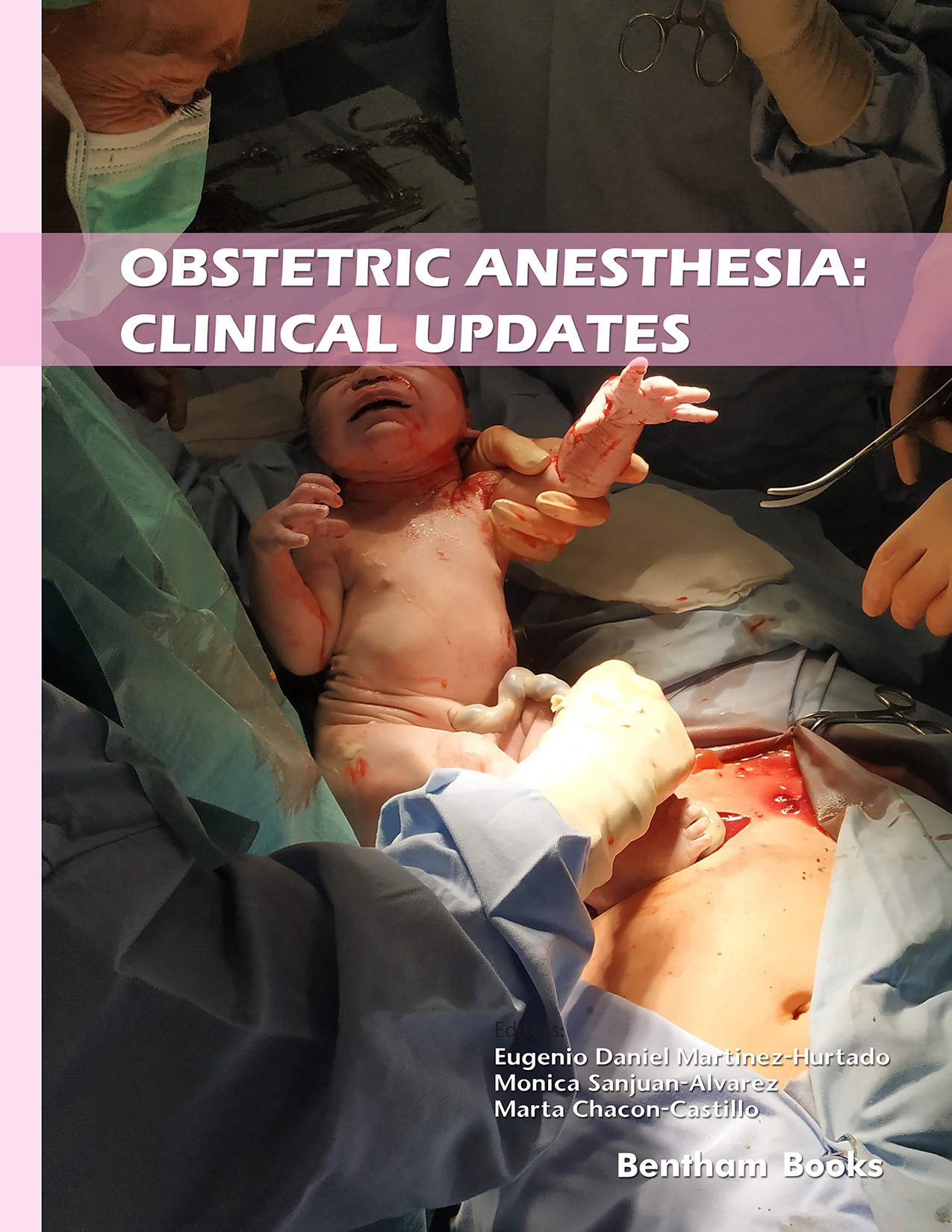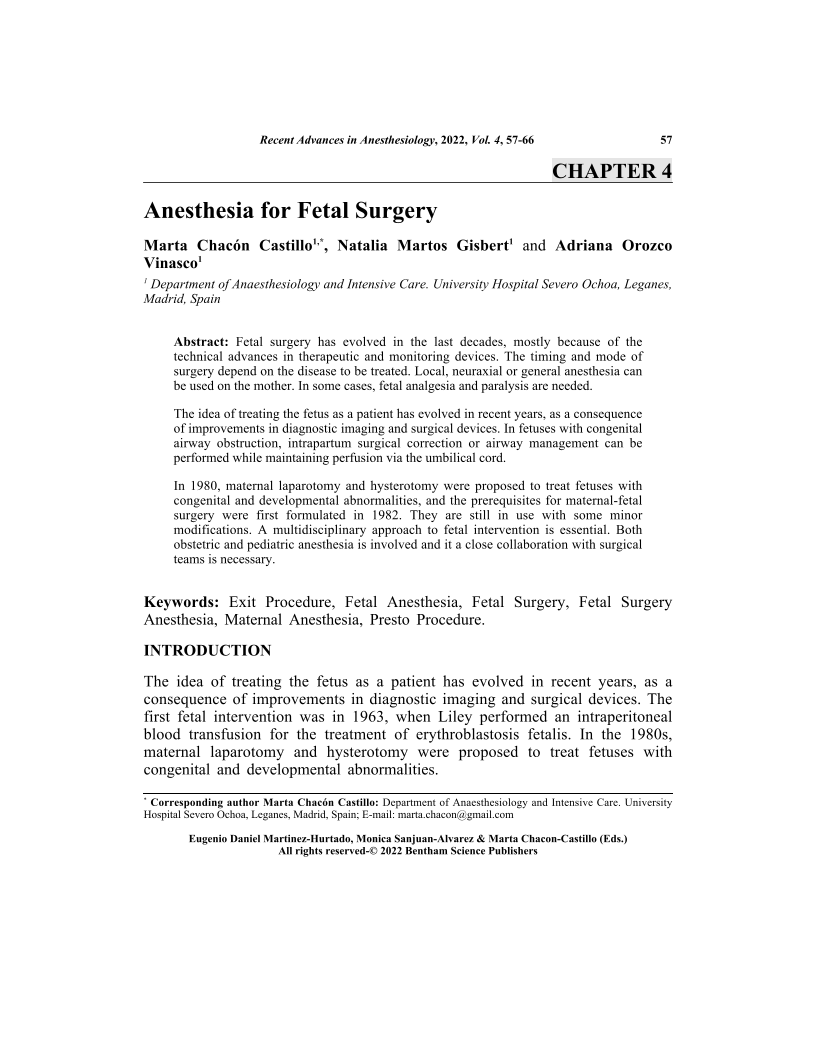Anesthesia for Fetal Surgery

- Authors: Marta Chacón Castillo1, Natalia Martos Gisbert2, Adriana Orozco Vinasco3
-
View Affiliations Hide Affiliations1 Department of Anaesthesiology and Intensive Care. University Hospital Severo Ochoa, Leganes, Madrid, Spain 2 Department of Anaesthesiology and Intensive Care. University Hospital Severo Ochoa, Leganes, Madrid, Spain 3 Department of Anaesthesiology and Intensive Care. University Hospital Severo Ochoa, Leganes, Madrid, Spain
- Source: Obstetric Anesthesia: Clinical Updates , pp 57-66
- Publication Date: November 2022
- Language: English
Anesthesia for Fetal Surgery, Page 1 of 1
< Previous page | Next page > /docserver/preview/fulltext/9789815051841/chap4-1.gif
Fetal surgery has evolved in the last decades, mostly because of the technical advances in therapeutic and monitoring devices. The timing and mode of surgery depend on the disease to be treated. Local, neuraxial or general anesthesia can be used on the mother. In some cases, fetal analgesia and paralysis are needed. The idea of treating the fetus as a patient has evolved in recent years, as a consequence of improvements in diagnostic imaging and surgical devices. In fetuses with congenital airway obstruction, intrapartum surgical correction or airway management can be performed while maintaining perfusion via the umbilical cord. In 1980, maternal laparotomy and hysterotomy were proposed to treat fetuses with congenital and developmental abnormalities, and the prerequisites for maternal-fetal surgery were first formulated in 1982. They are still in use with some minor modifications. A multidisciplinary approach to fetal intervention is essential. Both obstetric and pediatric anesthesia is involved and it a close collaboration with surgical teams is necessary.
-
From This Site
/content/books/9789815051841.chap4dcterms_subject,pub_keyword-contentType:Journal -contentType:Figure -contentType:Table -contentType:SupplementaryData105

